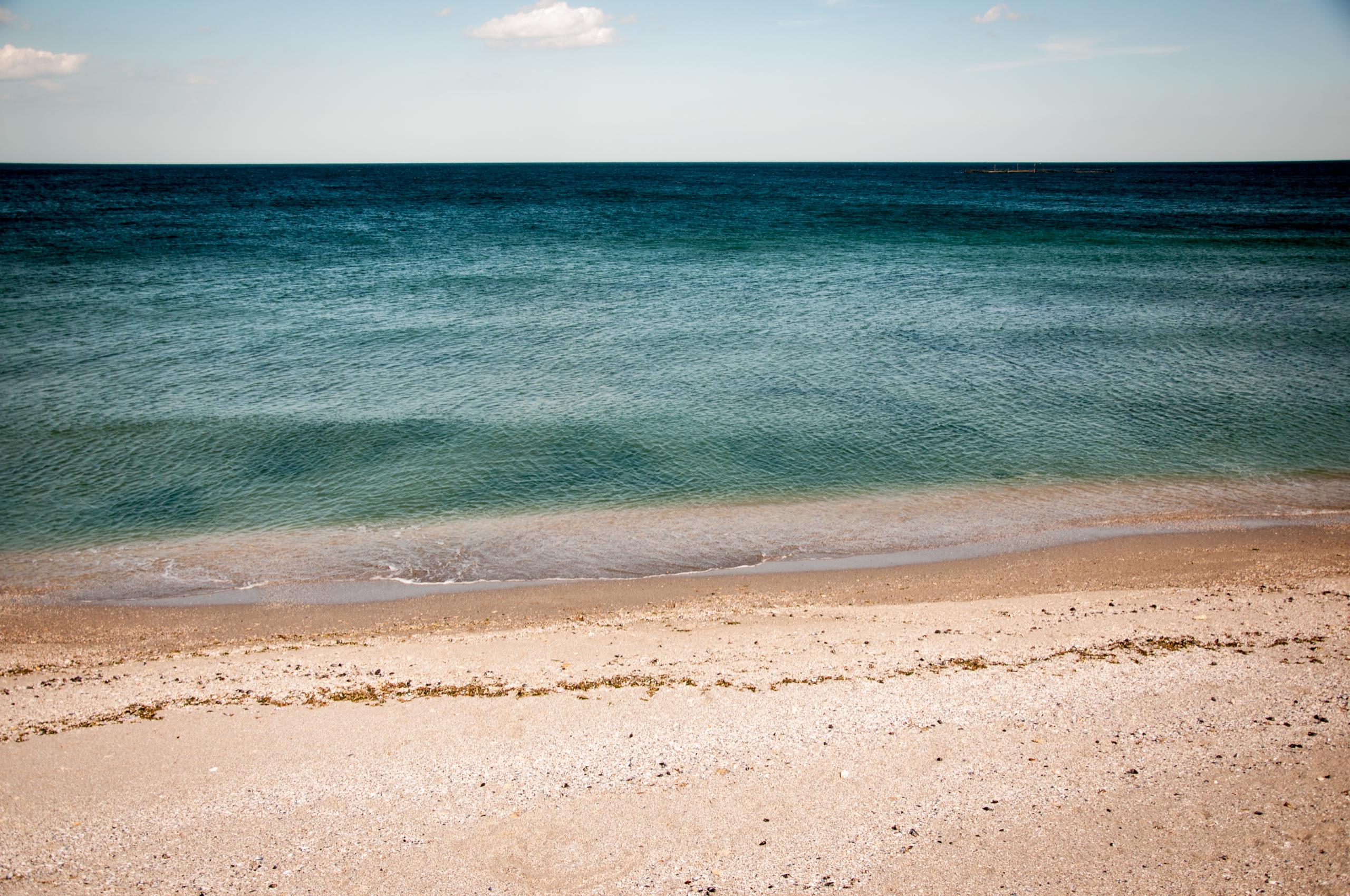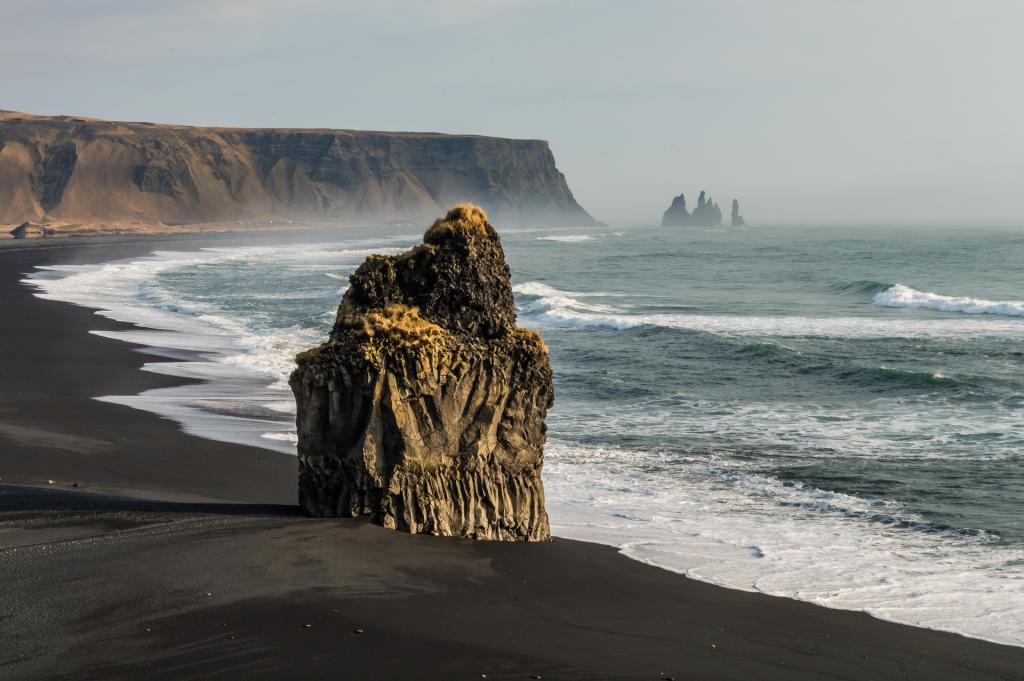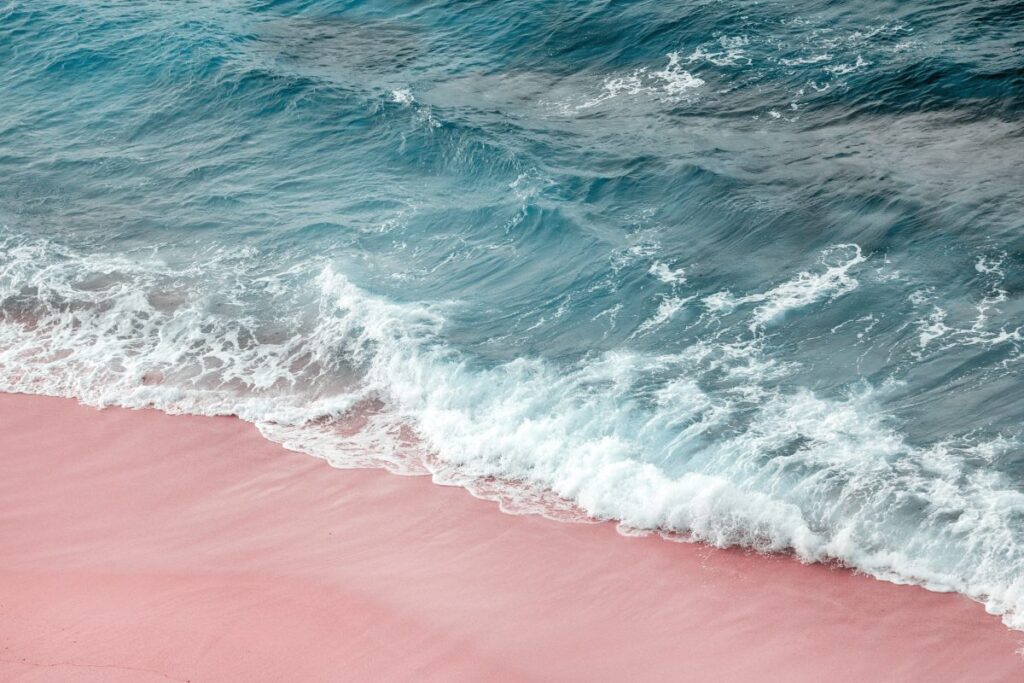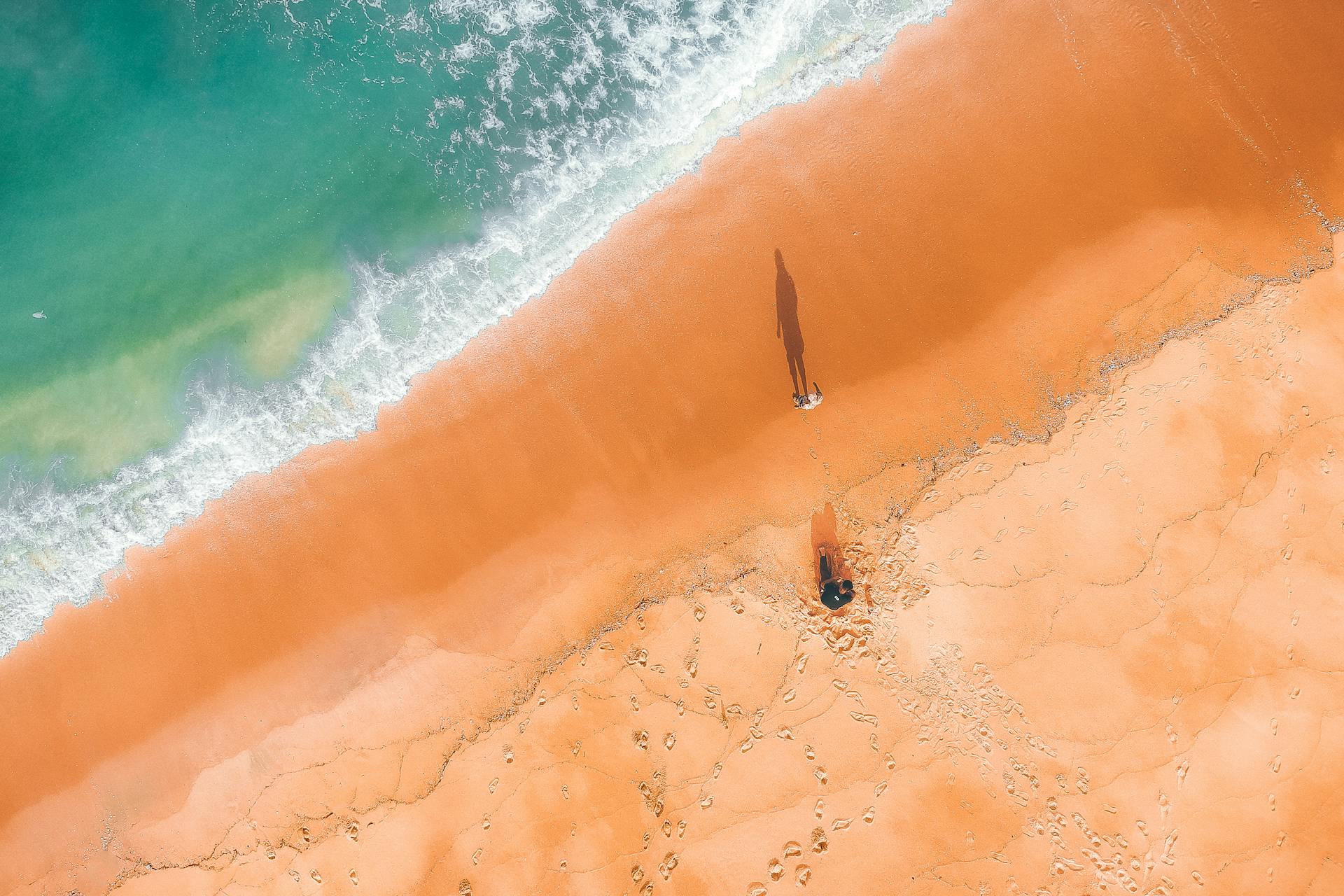
There are beaches of many colors around the world:
- White Sand Beaches
- Black Sand Beaches
- Red Sand Beaches
- Pink Sand Beaches
- Green Sand Beaches
- Orange Sand Beaches
- Purple Sand Beaches
A rainbow of colorful beaches exists across the globe, from Barbuda’s silky pink beaches to California’s gem-filled purple sands. The distinctive colors of these beaches draw tourists and admirers from across the pond. So, raise the sails as we embark on the seven seas to experience these radiant treasures.
White Sand Beaches

When you think of beaches, white-sand beaches are what usually come to mind. They’re the most popular and sought-after beaches, but what gives them their distinctive plushness? We know that quartz comprises a significant portion of sand’s makeup, but the color here comes from the high density present. A few notable examples include Orange Beach in Alabama and Bora Bora in French Polynesia.
Many beaches on the Gulf of Mexico boast a stark white color owing to the Appalachian Mountains. Following the last Ice Age, rivers and streams from the mountains made their way to the coast, where vast quantities of quartz entered the ocean.
Black Sand Beaches

Next to the white-sand beaches, these black beaches offer a stark contrast. These unique types of beaches are the result of volcanic activity, and they’re made up of volcanic rocks, black basalt, dark gray andesite, black volcanic glass, and iron oxides. Due to the elements within, black sand is much heavier than typical sand. The iron content in black sand causes the depth of color to sink further as the day goes on. Beware, the sands can become quite hot after absorbing light all day.
Some of the most famous black sand beaches can be found in Hawaii, including Pololu Valley Beach, Kehena Beach, and Punaluu Beach. Surprisingly, one black beach exists in the continental United States: the Black Sands Beach located on a stretch of California’s coastline called the Lost Coast.
Red Sand Beaches

Aside from white and black sand beaches, there are an array of other colorful beaches, including red sand beaches. The red pigment displayed is due to the significant quantity of iron either found in the earth’s soil or deposited by volcanic activity. There are several red-sand beaches across the globe, but the most notable are Rábida Island and Kaihalulu Beach.
Pink Sand Beaches

From ebony sands to bubblegum-pink shores, the world is well-stocked with colorful locales. The pink hue is a result of tiny, fragmented coral pieces and forams — shelled microorganisms found in algae. Fairly rare, these beaches can be found in California, Greece, Italy, Indonesia, the Phillippines, Spain, Tahiti, and numerous islands in the Caribbean.
Green Sand Beaches

Green beaches are exceptionally rare — there are only four in the world! Like many other colorful beaches, this grassy-looking type of beach boasts many different hues and tones. The presence of this beach, in particular, is a marvel because of what makes it green: olivine. Olivine is one of the earth’s most abundant minerals and is integral to much of rock formation, and it makes up a great deal of the earth’s mantle. Olivine is comprised of, among other things, heavy magnesium. It’s this weight that makes it unusual to have so much of it wash ashore and what makes it difficult to wash out to sea. The four green beaches of the world are found in Norway, Ecuador, Guam, and Hawaii.
Orange Sand Beaches

A search for “orange beaches” may take you to a white sand beach on the Alabama coast, but actual orange sand beaches are iron-dense oases. Like pink beaches, a significant portion of the sand sediments in an orange beach comes from fragments of broken shells, but volcanic deposits and orange limestone contribute to the sunny sands.
One of the most famous orange-sand beaches is at Ramla Bay on the island of Gozo in Malta. If you ever find yourself in the area, check out Calypso’s Cave — an ancient, natural cave purported to be the same as mentioned in the Odyssey.
Purple Sand Beaches

Purple beaches have patches of color throughout. Searching the sand results in the typical quartz grains, but the distinctive purple color comes from the unexpected and primary component within the sand sediment: garnets. Locals say that the manganese garnet deposits are most vivid after storms, but it’s said that the sand on purple beaches can sometimes look more green or pink. The most famous purple beach is Pfeiffer State Beach in Big Sur, California, and it’s one of the region’s most popular attractions.
All of these colorful beaches offer a kaleidoscope view of the world, and these sands dazzle tourists as much as locals. So now that you’re familiar with the world’s most colorful beaches, be sure to check out our blog on unique Types of Beaches.

